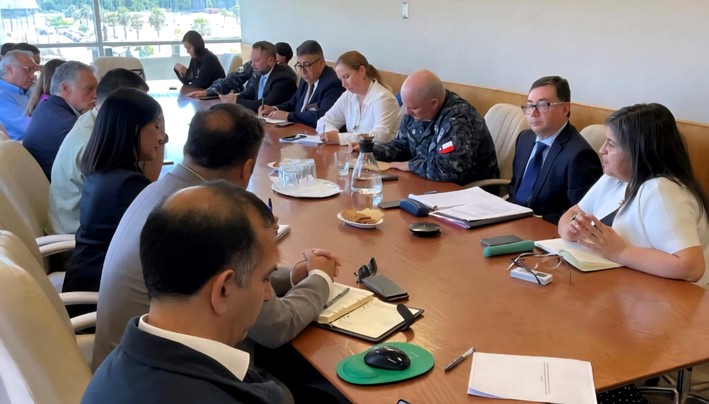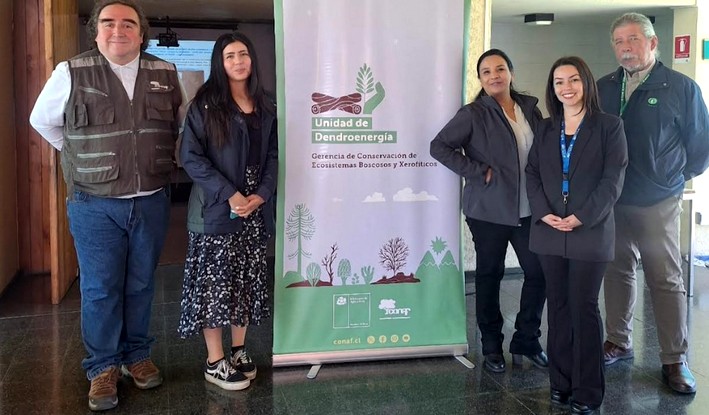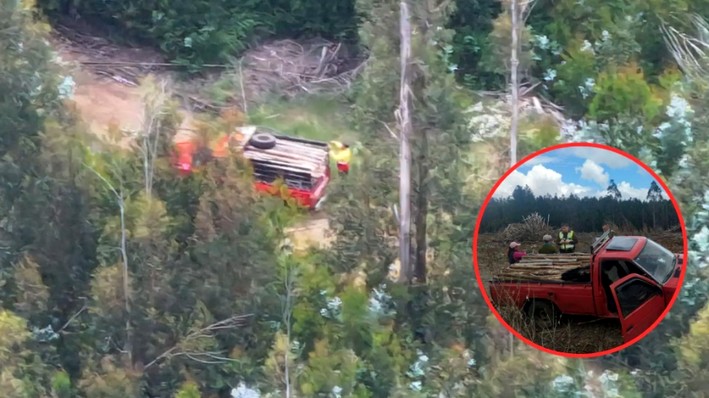UBB Teaches Courses on Technological Characterization and Classification of Structural Wood to Regional SMEs
- A total of six certified courses were conducted by the Universidad del Bío-Bío for professionals in the wood industry of the Region. This free initiative is part of the SME Ecosystem for Building with Wood project, funded by the Regional Government of Biobío.
Once again, the Universidad del Bío-Bío hosted meetings for representatives of SMEs, companies, and wood industry organizations in the Biobío Region. This time, with two 24-hour training sessions. Recall that since late 2022, the university has led a project aimed at contributing to and promoting industrialized wood construction through various seminars, workshops, and certified courses.
In line with this and under the project's development—funded by the Regional Government of Biobío through the Innovation Fund for Competitiveness—the fifth course, titled "Technological Characterization of Structural Sawn Wood," was conducted. In this regard, civil engineer, master in Wood Science and Technology, and course instructor Alan Jara provided details about its objective.
"The course is designed to provide basic knowledge about the mechanical classification of wood, primarily aimed at equipping professionals with the tools to promote wood structures that meet a minimum associated standard. This is achieved by applying visual and mechanical classification methods," Jara stated.
For renewable energy and electrical engineer and representative of Windsolar Spa, Víctor Lagos, the experience of participating in the three-day course was enriching.
"I see it as an opportunity to explore the sustainable aspects applicable to wood and build networks with fellow participants... Today, if we don’t work as a team, it’s hard for companies to grow. On the other hand, the professors at the Universidad del Bío-Bío are experts in everything related to wood construction. I take this as personal motivation to apply what I’ve learned in my company in the future," Lagos remarked.
Similarly, for mechanical engineer and representative of Maderas Villagra, Pablo Villagra, the initiative fosters strategic alliances.
"I find this course very interesting, comprehensive, and excellent. The knowledge we gain here can be directly applied to our company in a specific area. It opens the door to a new business niche. It’s a professionally enriching experience to share with other professionals, support each other, and create strategic alliances between companies," Villagra emphasized.
On the other hand, the sixth course, titled "Classification of Wood for Structural Use," covered topics focused on structural grades of sawn wood and Chilean standards NCh 1207, NCh3028-1, NCh3028-2, and NCh1198.
Wood engineer and course instructor Jorge Fernández explained: "The main objective is for students to learn how to classify structural wood, as the government has promoted—and now enforced—a labeling decree for wood products to standardize them, requiring certain characteristics."
One labeling requirement is that wood must be structurally classified under the grades established by Chilean standard NCh 1207. "The intention is for attendees to improve their processes so buyers know what to choose when purchasing. This way, when submitting payment statements to the Ministry of Housing and Urban Development, they can be certain that what they install in social housing or other constructions complies with current regulations," Fernández added.
For Jorge Mena, a doctoral student in sustainable materials and process engineering at UBB, the course deepens knowledge.
"We are learning wood classification to determine if structural wood is suitable for house construction. They’re teaching us how to reject or accept wood based on type, quality grade, and—most importantly—how to conduct ourselves during an inspection," Mena noted.
Similarly, for construction engineer and representative of Constructora JPV Ltda, Juan Peñaloza, the course has enhanced his understanding of visual classification.
"I found the course interesting. I’ve gained knowledge that, while somewhat familiar, has been reinforced here. It helped me better understand the concept and importance of wood, its characteristics, and allowed me to network with like-minded professionals," Peñaloza highlighted.
Lastly, construction engineer Joaquín Gatica appreciated the coherence and continuity of the courses.
"This course connected very well with the previous one on wood characterization. Now we’re classifying. Honestly, from the last course to this one, I’ve gained a lot of knowledge that I didn’t have clear or had lost during my professional training," Gatica concluded.

















